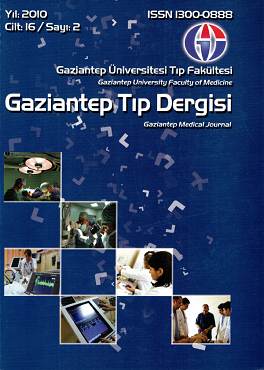Complex Regional Pain Syndrome Type-I: Social Aspect And Life Care Planning
DOI:
https://doi.org/10.58600/eurjther.2010-16-2-1283-archKeywords:
Complex Regional Pain Syndrome Type I, Reflex sympahetic dystrophyAbstract
Complex regional pain syndrome type I, also known as reflex sympathetic dystrophy, is a multisymptom syndrome usually affecting one or more extremities. Etiology is not being solved completely, but uncontrolled sympathetic activity and inflammatory response following soft tissue and nevre injury is thought to be the main cause of this disease. Common symptoms are pain and tenderness to palpation and evidence of autonomic nervous dysfunction in an extremity. There is not one single successfull treatment approach to complex regional pain syndrome and if the treatment of patient is not enough, major problems in patients social life may be occured. In this study, social aspect and life care planning of complex regional pain syndrome type I were discussed.
Metrics
References
Mitchell SW, Morehouse GR, Keen WW. Gunshot Wounds and Other Injuries of Nerves. Philadelphia, JB Lippincott Co. 1864.
Kirkpatrick AF. (1999). Reflex Sympathetic Dystrophy Syndrome Association of America. Clinical Practice Guidelines.
Stilz RJ, Carron H, Sanders DB. Reflex sympathetic dystrophy in a six-year-old: Successfultreatment by transcutaneous nerve stimulation. Anesth Analg. 1977;69:438-44.
Cohen M. Clinical frontiers in the sleep/psychiatry interface-clinical issues in pain and sleep. Psychiatry Treatment Updates (1999).
Beyazova M, Kutsal YG. Fiziksel Tıp ve Rehabilitasyon, Cilt II, Chapter 7, Güneş Kitabevi, 2000;1903-1915.
Mailis A, Wade J. Profile of Caucasian Women with possible genetic predisposition to reflex sympathetic dystrophy: a pilot study. Clin J Pain. 1994;10(3):210-7.
Roberts J. A hypothesis on the physiological basis for causalgia and related pains. Pain. 1986;24:297-311.
Avelanet M, Saenz A, Gonzalez-Viejo MA. Treating complex regional pain syndrome, after heart surgery, with gabapentin: a case report. Pain Clinic. 2001;13(2):177-81.
Kurvers HAJM. Reflex sympathetic Dystrophy: facts and hypothesis. Vasc Med. 1998;3:207-14.
Nicholson, B. Observations on neuropathic pain. Presented at the American Pain Society 19th Annual Meeting (2000).
Alyanak AM, Refleks sempatik distrofili olgularda karbondioksitli su ile yapılan kısmi banyonun klinik semptomlardaki etkinliği, İstanbul Üniversitesi, Sağlık Bilimleri Enstitüsü, Tıbbi Ekoloji ve Hidroklimatoloji AD, Uzmanlık Tezi, İstanbul, 1996.
Manning DC. Reflex sympathetic dystrophy, sympathetically maintained pain and complex regional pain syndrome: diagnoses of inclusion, exclusion, or confusion? J Hand Ther. 2000;13:260-8.
Ciccone DS, Bandilla EB. Psychological dysfunction in patients with reflex sympathetic dystrophy. Pain. 1997;71:323-33.
Downloads
Published
How to Cite
Issue
Section
License
Copyright (c) 2023 European Journal of Therapeutics

This work is licensed under a Creative Commons Attribution-NonCommercial 4.0 International License.
The content of this journal is licensed under a Creative Commons Attribution-NonCommercial 4.0 International License.


















